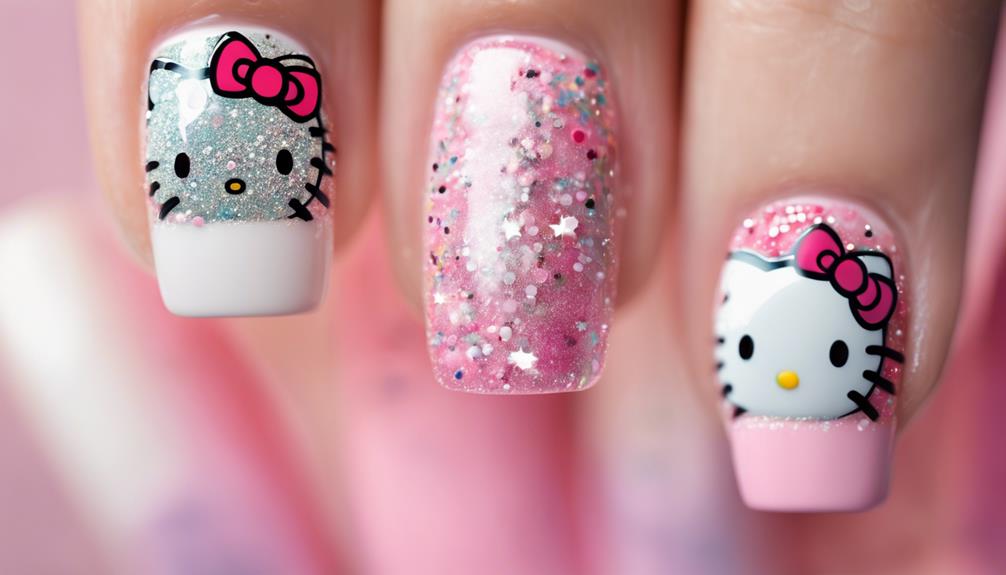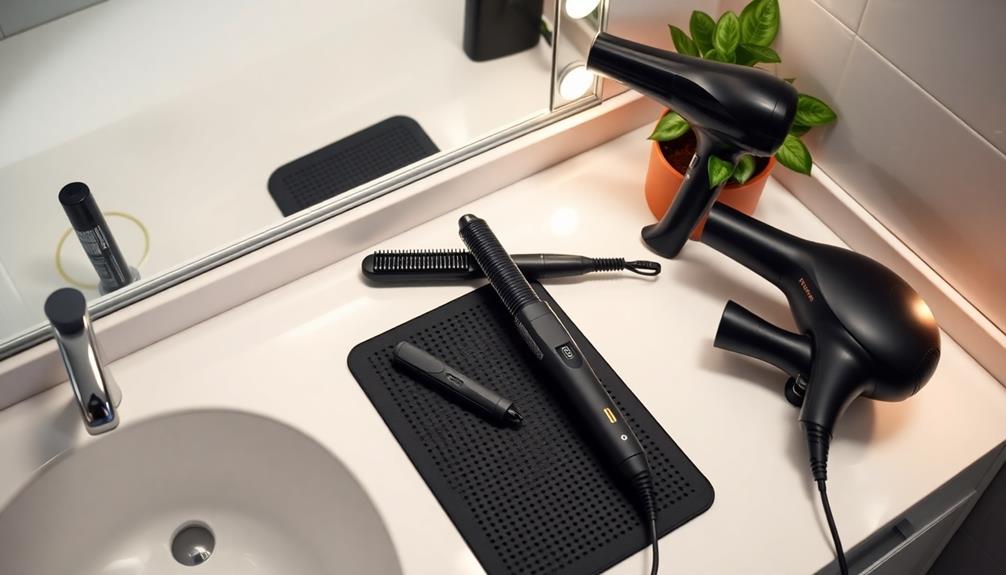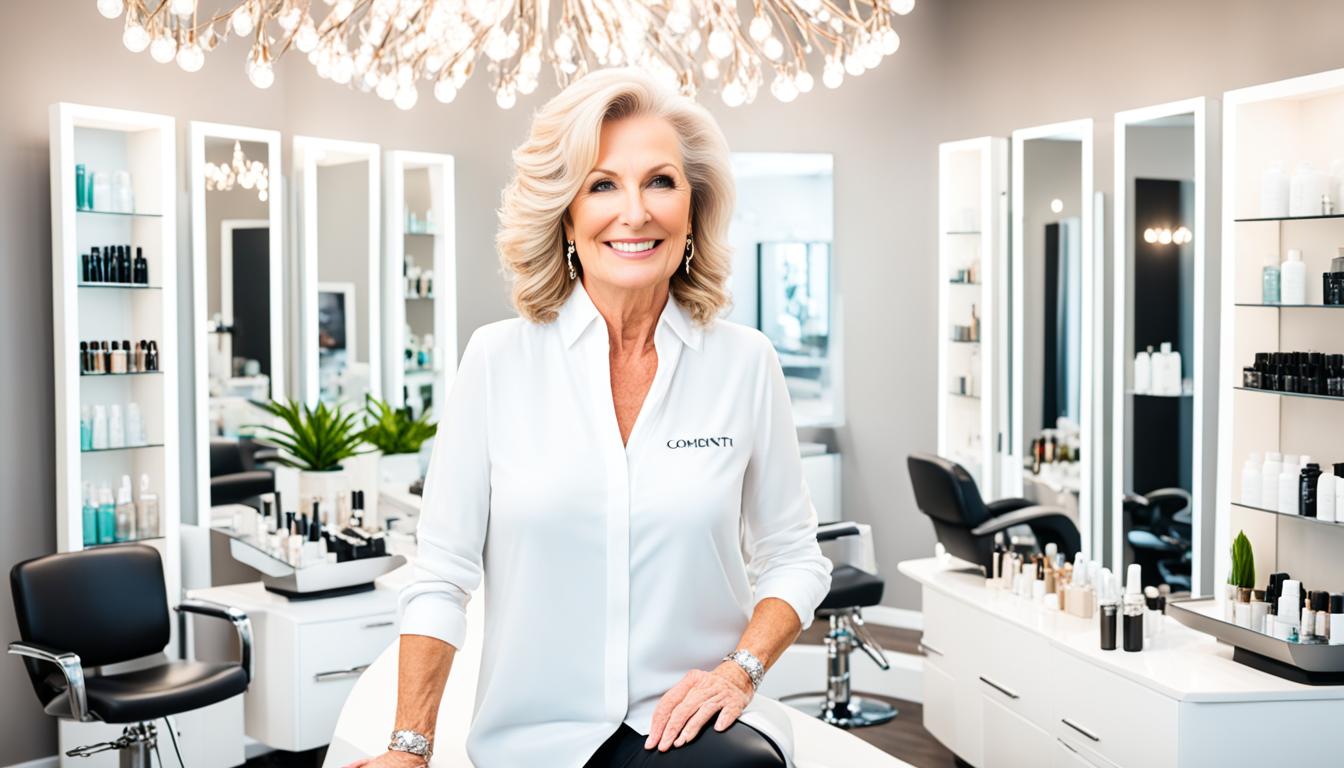To transform your relationships with clients in the salon, focus on positive communication. Establish trust, loyalty, and a welcoming environment by valuing and understanding your clients. Use warm body language, maintain eye contact, and smile to enhance their experience. Clear, compassionate messages coupled with active listening create meaningful dialogues. Tailor your communication to each client's preferences for a personalized touch. By fostering lasting relationships through effective communication, you guarantee clients feel heard and appreciated. Embrace techniques that nurture trust and satisfaction, leading to stronger connections and repeat visits. More insights await to enhance your salon-client interactions.
Key Takeaways
- Establishing strong client relationships through positive communication fosters loyalty and trust.
- Nonverbal cues like body language and eye contact enhance client experience.
- Using effective verbal strategies like clear communication and mirroring builds rapport.
- Tailoring communication to meet individual preferences fosters a client-centered environment.
- Fostering meaningful dialogue through active listening and open-ended questions nurtures lasting relationships.
Importance of Positive Communication
Positive communication plays a pivotal role in establishing strong client relationships and fostering a welcoming atmosphere in the salon. It's through effective communication that you can truly connect with your clients, understand their needs, and guarantee they feel valued and heard.
When you engage in positive communication, you create a space where clients feel comfortable expressing their preferences, concerns, and desires. This open dialogue not only prevents dissatisfaction but also builds trust and loyalty.
Nonverbal Communication Techniques

Utilizing effective nonverbal communication techniques is essential for creating a positive salon environment and enhancing client interactions. When it comes to nonverbal communication, body language plays a vital role in conveying warmth, professionalism, and empathy to your clients. Remember to maintain eye contact during conversations as it helps build trust and connection, showing clients that you're attentive and engaged.
Additionally, incorporating positive nonverbal cues like smiling and nodding can greatly enhance the overall client experience, making them feel valued and understood. By understanding and aligning your nonverbal signals with your verbal messages, you can ensure clearer communication and foster improved client relationships.
Mastering these nonverbal communication techniques won't only benefit your interactions in the salon but also help you create a welcoming and client-focused atmosphere that keeps clients coming back for more.
Effective Verbal Communication Strategies

Maintaining effective verbal communication in the salon is key to ensuring clear client interactions and fostering trust and satisfaction. When communicating with clients, it's essential to convey your messages with compassion and clarity. Your tone and confidence greatly impact how clients perceive your messages. Mirroring the client's communication style and projecting the right tone can enhance understanding and build rapport. Using open-ended questions is a powerful strategy to encourage clients to express their needs and preferences effectively. Here is a table to help you understand some effective verbal communication strategies:
| Verbal Communication Strategy | Description |
|---|---|
| Conveying messages clearly and compassionately | Show professionalism and build trust with clients. |
| Mirroring client's communication style | Enhance understanding and rapport during interactions. |
| Using open-ended questions | Foster meaningful dialogue and allow clients to express themselves effectively. |
Client-Centered Communication Techniques

Implementing client-centered communication techniques in the salon involves tailoring your approach to meet individual preferences and create a comfortable environment for each client.
When focusing on client-centered communication, consider the following:
- Silent Appointments: Offering silent appointments caters to clients who prefer minimal conversation during their salon visits, enhancing their comfort and overall experience.
- Respecting Communication Preferences: Understanding and respecting clients' communication preferences not only shows consideration but also helps create a welcoming atmosphere for them.
- Active Listening: Prioritizing active listening is key to fostering positive communication in a salon setting. By truly listening to your clients, you create an open and supportive environment where they feel heard and valued.
Fostering Meaningful Dialogue

When it comes to fostering meaningful dialogue in the salon, it's all about active listening, using open-ended questions, and showing empathy and understanding towards your clients.
By truly listening to what they've to say, asking questions that invite them to share more, and empathizing with their needs, you can build a strong connection and create a welcoming environment.
These techniques not only help you understand your clients better but also nurture trust, loyalty, and satisfaction in your salon.
Active Listening Techniques
To foster meaningful dialogue in the salon, focus on enhancing your active listening techniques. Active listening involves fully engaging with your client, showing respect, and understanding their needs. By implementing active listening techniques, you can build trust, improve client satisfaction, and strengthen relationships effectively.
Here are three key ways to enhance your active listening skills:
- Maintain Eye Contact: Make sure to establish and maintain eye contact with the client to show attentiveness and respect.
- Use Nodding and Paraphrasing: Nodding along and paraphrasing what the client says demonstrates that you're actively listening and understanding their concerns.
- Ask Clarifying Questions: Encourage further conversation by asking open-ended questions that show your interest in the client's thoughts and feelings.
Open-Ended Questions
To enhance client engagement and encourage deeper conversations in the salon, employ open-ended questions as a powerful tool for fostering meaningful dialogue.
Open-ended questions are essential communication skills that allow clients to share more about their needs, preferences, and concerns. By using open-ended questions, you create a space for clients to express themselves freely, leading to a more engaging and personalized experience. These questions not only help you understand your clients better but also promote stronger relationships and increased satisfaction.
When you ask open-ended questions, you show your active listening skills and genuine interest in your client's well-being. This demonstrates that you value their thoughts and feelings, creating a welcoming environment for open communication. By incorporating open-ended questions into your interactions with clients, you can foster a deeper connection and build trust, ultimately enhancing the overall salon experience for both you and your clients.
Empathy and Understanding
Utilize empathy and understanding as essential tools in fostering meaningful dialogue with clients in the salon. When you actively listen to your clients, you show that you care about their emotions and needs, creating a deeper connection. Understanding their perspectives allows you to provide personalized service tailored to their preferences, building trust and loyalty.
Practice active listening: By truly hearing what your clients are saying, you can respond thoughtfully and empathetically, making them feel valued and understood.
Offer personalized service: Tailoring your approach to meet each client's unique needs and desires shows that you're attentive and committed to their satisfaction.
Foster meaningful dialogue: By acknowledging their feelings and concerns, you create a supportive and welcoming environment where clients feel comfortable opening up and sharing, strengthening your relationships.
Empathy not only enhances the client's experience but also helps you grow as a beauty professional by connecting with clients on a deeper level.
Building Lasting Client Relationships

Enhancing client relationships in the salon involves personalized experiences and effective communication techniques. By making clients feel at ease and valued, you can foster lasting connections that lead to increased loyalty and repeat business. Personalized experiences show that you care about their individual needs, creating a sense of trust and satisfaction. Effective communication, such as active listening and genuine interest in their preferences, plays an essential role in building strong relationships. Remembering details about your clients not only shows attention to detail but also reinforces the bond you share.
Here is a visual representation of how to build lasting client relationships in the salon:
| Building Lasting Client Relationships |
|---|
| Personalized Experiences |
| Effective Communication |
| Active Listening |
| Genuine Interest |
| Remembering Details |
Frequently Asked Questions
How Can I Handle Difficult Clients in the Salon?
Dealing with challenging customers at the salon can be tough, but you've got this! Remember to stay calm and listen to their concerns.
Acknowledge their feelings and try to find a solution that works for both of you. Communication is key, so be clear and respectful in your responses.
Sometimes, offering a compromise or a small gesture of goodwill can help turn a difficult situation into a positive experience. Keep your cool and handle it like a pro!
What Should I Do if a Client Is Unhappy With Their Service?
If a client is unhappy with their service, it's essential to address their concerns promptly.
Listen actively to understand their specific issues.
Apologize sincerely, showing empathy for their dissatisfaction.
Offer solutions like a complimentary fix or a partial refund.
Make sure they feel heard and valued throughout the conversation.
Take responsibility for any mistakes and commit to improving their experience in the future.
Building trust through effective communication can help salvage the relationship and retain their loyalty.
Is It Important to Follow up With Clients After Their Visit?
Absolutely, following up with clients after their salon visit is essential for building strong relationships.
According to a recent survey, 85% of clients appreciate receiving a follow-up message. This simple gesture shows that you care about their satisfaction and value their business.
Sending a quick text or email to check in on their experience can go a long way in fostering trust and loyalty.
Stay connected and show your clients you're there for them beyond the salon chair.
How Can I Maintain Professionalism in Challenging Situations?
To maintain professionalism in challenging situations, focus on active listening. Acknowledge the issue calmly, showing empathy towards the client's concerns.
Use clear and respectful communication to address the problem, offering solutions or compromises when possible. Remember to stay composed and avoid reacting emotionally.
Keep your tone neutral and professional, seeking to find common ground and resolve the situation amicably. Your ability to handle difficulties with grace will strengthen your client relationships and reputation.
What Steps Can I Take to Improve Client Loyalty and Retention?
To improve client loyalty and retention, focus on building trust. Start by actively listening to their needs and preferences.
Offer personalized recommendations and remember details about their preferences to show you care. Provide exceptional service consistently, exceeding their expectations.
Send personalized follow-up messages and special offers to show appreciation. Finally, ask for feedback and act on it to continuously enhance their experience.
Building genuine connections will keep clients coming back for more.
Conclusion
To sum up, fostering positive communication in the salon is crucial for building lasting relationships with your clients. By utilizing effective verbal and nonverbal techniques, you can create a welcoming and client-centered environment that promotes meaningful dialogue.
Remember, communication is a two-way street, so listen actively and engage with empathy. By implementing these strategies, you can transform your interactions with clients and cultivate a loyal customer base. Make sure to ask open-ended questions and truly take in their responses. This not only shows that you value their input, but also helps you gain a deeper understanding of their needs and preferences. By consistently communicating with clients in this way, you can foster stronger relationships and build trust, ultimately leading to increased loyalty and repeat business.
Embrace the power of communication to enhance your salon experience and client satisfaction.










